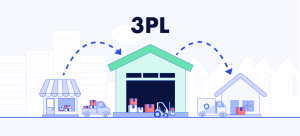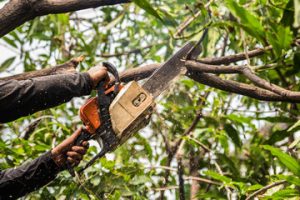Cabinet Painting Sacramento transforms ordinary furniture into stunning focal points. It is a cost-effective way to refresh kitchens, bathrooms, and storage spaces. Modern techniques allow for smooth finishes and durable results. The process combines creativity with functional improvement.

Preparation is key to a flawless paint job. Surfaces must be cleaned, sanded, and primed for optimal adhesion. Skipping these steps often leads to peeling or uneven results. Proper prep ensures longevity and a professional look.
Choosing the right paint type affects durability and finish. Acrylic, enamel, and chalk paints offer different textures and levels of resilience. Selecting a paint suited for the cabinet’s material enhances performance. It also ensures color vibrancy over time.
Color selection impacts both style and perception. Light colors can make small spaces appear larger and brighter. Dark shades add elegance and contrast. Coordinating paint with hardware and surroundings creates a harmonious design.
Hardware replacement can complement cabinet painting. New knobs, handles, and pulls update the overall aesthetic. Coordinated hardware emphasizes the fresh paint and modernizes the space. Small changes produce a big visual impact.
Technique matters in achieving smooth, streak-free surfaces. Brushing, rolling, and spraying each offer distinct results. Sprayers often provide the most even finish on large surfaces. Brushing allows precision in corners and intricate details.
Cabinet painting also protects surfaces from wear and tear. Painted layers shield wood from moisture, heat, and stains. This prolongs the cabinet’s lifespan significantly. Functional improvements make painting an investment, not just decoration.
Primers enhance adhesion and hide imperfections. They create a consistent base, especially on older or discolored cabinets. Priming reduces the number of paint coats needed. It also ensures uniform color and smoothness.
Distressing techniques add character and charm. Light sanding or layered painting creates a vintage, rustic appeal. This style works well with traditional and farmhouse aesthetics. Distressed finishes allow creativity while masking minor imperfections.
Cabinet painting can refresh both interiors and exteriors. Bathroom vanities, built-in shelving, and kitchen cupboards all benefit. The versatility makes it a popular home improvement choice. Transformation occurs without major construction.
Environmental considerations influence paint choices. Low-VOC and eco-friendly paints reduce harmful fumes and chemical exposure. They contribute to healthier indoor air quality. Choosing green options aligns with sustainable living practices.
DIY approaches are increasingly popular. Homeowners tackle small projects with instructional guides and tutorials. However, professional painters often achieve faster, smoother, and more durable results. Skill and experience affect the final quality.
Multi-step finishing improves durability and aesthetics. Sanding between coats creates a silky, smooth surface. Sealing or topcoating adds protection and enhances shine. These steps increase the lifespan of the painted cabinets.
Cabinet painting can increase property value. Modernized and well-maintained cabinets appeal to buyers. The visual impact alone elevates interior perception. It is a relatively inexpensive investment with high return potential.
Texture options expand creative possibilities. Matte finishes offer understated elegance, while gloss provides vibrancy and reflectiveness. Satin and eggshell balances shine and subtlety. Combining textures creates dimension and depth in design.
Cabinet painting also helps conceal damage. Scratches, discoloration, and minor dents become less noticeable with a fresh coat. This extends the functional life of older cabinetry. It is an affordable alternative to full replacement.
Proper ventilation ensures safety and proper drying. Paint fumes can be hazardous, and airflow speeds curing. Open windows and fans improve indoor conditions. Following safety measures protects health and preserves quality.
Custom color mixing allows personalization. Unique shades reflect individual style and match other interior elements. This flexibility makes each cabinet set one-of-a-kind. Personalized paint creates a signature look in any space.
Cabinet painting can coordinate with countertop and flooring upgrades. Color harmonization enhances the overall visual flow. It elevates interiors without expensive remodeling. Cohesion creates a polished and intentional aesthetic.
Time management is crucial for optimal results. Each coat requires adequate drying before the next application. Rushing can lead to bubbles, smudges, or peeling. Patience ensures a professional and lasting finish.
Cabinet painting can include decorative techniques. Stenciling, ombre effects, and color blocking add artistic flair. Creative designs turn functional furniture into statement pieces. These techniques transform cabinets from mundane to extraordinary.
Surface testing prevents mistakes. Trying paint on a small area shows how it adheres and dries. This ensures color accuracy and compatibility with the existing material. Testing avoids costly errors and frustration.
Cabinet painting also allows for hardware repositioning. Handles and knobs can be upgraded or relocated for ergonomic and aesthetic benefits. Painting first ensures a clean surface before installation. This sequence avoids accidental paint damage.
Maintenance is simpler after painting. Smooth, sealed surfaces are easier to clean and resist staining. Regular upkeep maintains aesthetics and function. Well-maintained cabinets retain value and appeal for years.
Cabinet painting can be adapted for rental properties. Temporary or removable paints provide a refreshed look without permanent changes. Renters benefit from improved aesthetics and personal satisfaction. Creative solutions respect lease restrictions.
Lighting impacts the appearance of painted cabinets. Natural and artificial light can alter color perception. Testing finishes under different lighting ensures satisfaction. Proper lighting enhances the vibrancy and depth of paint.
Cabinet painting can create thematic cohesion. Coordinating colors across rooms or spaces enhances design flow. This technique strengthens interior harmony and visual appeal. Intentional color planning elevates overall home design.
Paint finishes also affect cleaning and longevity. Glossy finishes resist dirt and are easier to wipe, while matte may show smudges more easily. Selecting the right finish balances aesthetics with practicality. It ensures longevity without sacrificing style.
Professional-grade tools improve application quality. High-quality brushes, rollers, and sprayers reduce streaks and uneven textures. They save time and enhance the smoothness of the finish. Investing in proper tools ensures superior results.
Cabinet painting can be paired with decorative molding. Adding trim or paneling before painting enhances depth and sophistication. Painted moldings highlight architectural details. These subtle touches elevate a simple paint job into design excellence.
Seasonal considerations affect paint performance. Humidity, temperature, and airflow influence drying times and adhesion. Scheduling painting in favorable conditions ensures optimal results. Awareness prevents issues like cracking or uneven finishes.
In conclusion, cabinet painting is a transformative solution for modern interiors. It offers aesthetics, protection, and value without extensive renovation. The combination of creativity, technique, and care yields lasting results. With thoughtful planning, painted cabinets redefine spaces with style and function.





